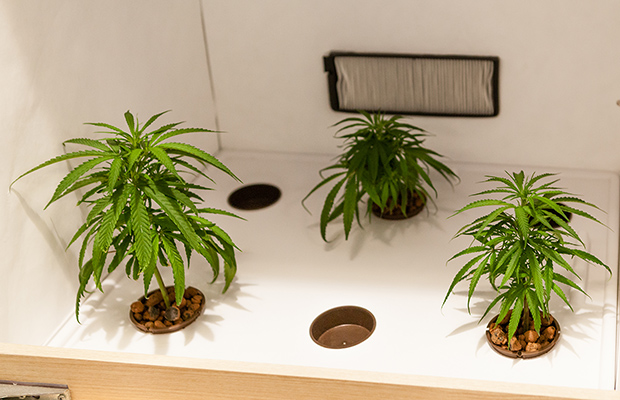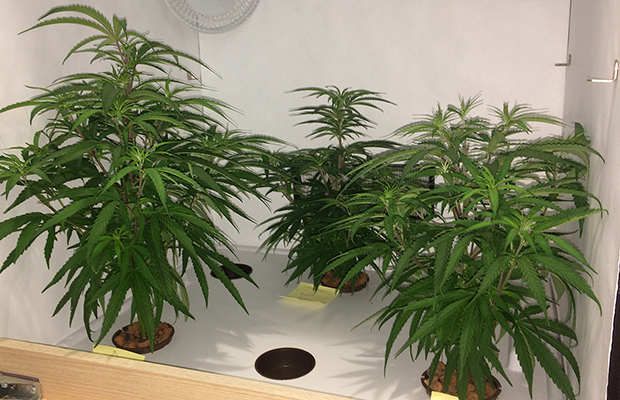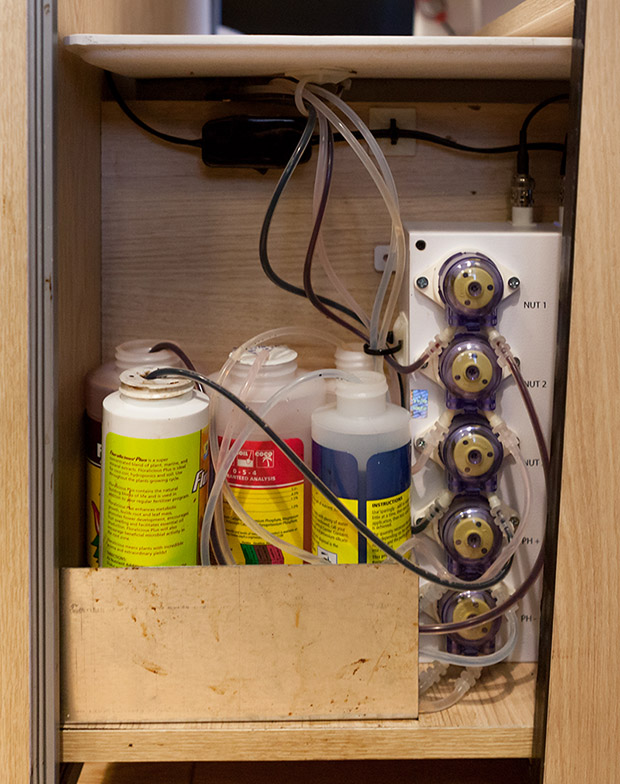
Cannabis
How To Grow Pot in a Co-Working Office
The team at Cloudponics has created a GroBox that embodies the future of cannabis with its sleek and scientific design, but the grow unit’s discreetness means that it perhaps fits best in places with regressive cannabis regulations from prohibitions past.
In San Francisco’s SoMa district, where the warehouses and underground gay clubs of the 1980s have now given way to tech company headquarters and imposing new skyscrapers, one company is growing marijuana in semi-secret.
The Cloudponics team works in a co-working office space, down the hall from a kitchen serving free kombucha on tap and next to a glass wall behind which men stare at triple-screen monitors of stock market data and lines of code. Rents in this office soar at about $1,000 dollars per seat in a private office. The dominant shadow of the Salesforce Tower looms large outside the floor-to-ceiling windows.
Upon entering Cloudponics’ small office, the company’s PR representative requests that he not to be called by anything other than his first name — Mike — and tells us to shut the door. In the back of the office is a tall, wood-paneled container shaped like a refrigerator which Mike unlocks with an iPhone app. The flush of LED light fills the room and reflects out of the office’s glass windows. The plants inside are three young Blue Dream clones that they’ve named Amanda, Lil Kim and Joan Jett. They’re small, having spent just 14 days so far in the unit, and barely any smell wafts into the office. In just two more weeks, they’ll more than triple in size.


The plants are living in a GroBox, a home-growing hydroponics unit that started in 2015 as the brainchild of the Chilean startup company Cloudponics. The company’s founder Nicolas Ruiz said that he came up with the idea for the GroBox because his marijuana plants kept dying whenever he left them along on work trips, and he was sick of wasting that potential. Using the GroBox app, the functions of the growing container can be remotely controlled — including when the lights are on and what nutrient recipes are being used. The app includes daily tasks for the growers, such as adding fresh nutrients in one day or raising the LED lamp the next, and has specific settings for over 100 strains in their database. (GroBox also has an “advanced” mode for growers who want to circumvent the strain-based settings and create their own growing plan.)
In the current model, GroBox has two doors to access the box’s two compartments: one where the plants grow, and one beneath where the fresh water, the nutrient mix and the GroBox’s software brain is located. Mike said that the next generation of the GroBox will only have one main door, and will be available in the coming months.

Right now, Mike says that they’re selling units mostly in the United States and the UK, but that they’ve gotten requests to ship the units to strict prohibition countries such as Iran and Saudi Arabia. The GroBox currently costs about $2,500 dollars, but given that a GroBox can complete three to four grow cycles in a year, each yielding eight to 10 ounces of cannabis, Mike claims that a GroBox can earn people their money back in one cycle.
However, that’s only if the price of cannabis remains high, at around $300 per ounce. In states with developed recreational marijuana markets such as Washington and Oregon, the price of an ounce of cannabis has dipped as low as $60 per ounce due to oversupply.
But Mike said Cloudponics isn’t worried that the tide of adult-use legalization regulation will make home growing much less appealing. “We actually think that when the price of cannabis drops, it enables people to do their own thing in terms of growing,” said Mike.
It’s unclear how many people actually grow marijuana at home, but Cloudponics is betting that this demographic will grow. They’re also betting that those intrepid home-growers are not looking to cultivate in large-scale, black market converted shipping containers or garages, but actually in legal, six-plant-accommodating boxes that can fit comfortably next to a bookshelf in the living room — or in the corner of a co-working office in downtown San Francisco.
TELL US, would your office be better with cannabis?























